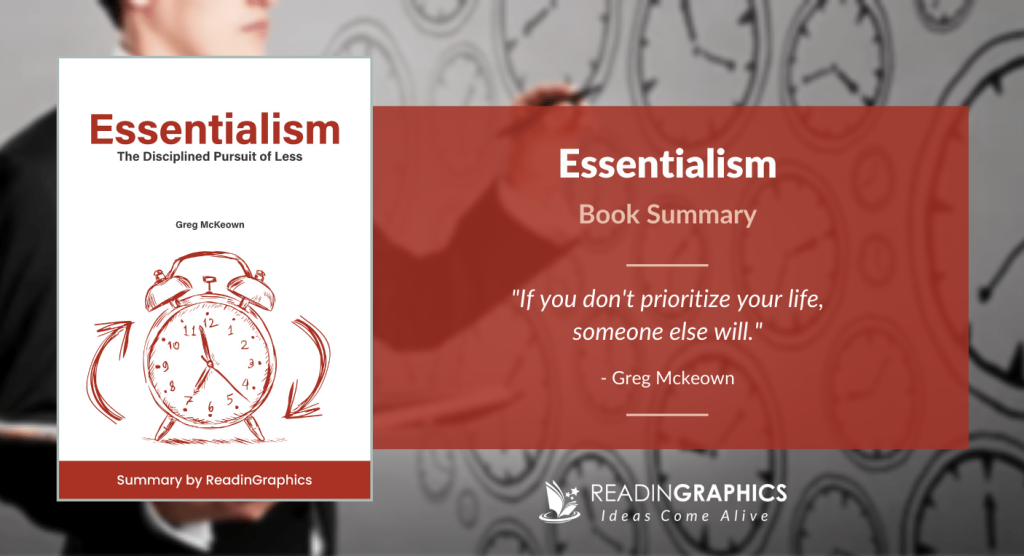Essentialism in Work: Increasing Productivity Through Focus

Understanding the Power of Essentialism
Today’s work environment is characterized by an overwhelming amount of distractions, from incessant notifications on our smartphones to overflowing email inboxes. This barrage often leaves professionals feeling overstretched and unproductive, leading to a decline in both work quality and personal satisfaction. Enter essentialism, a philosophy that acts as a guiding light for those struggling to navigate this chaotic landscape. At its core, essentialism empowers individuals to concentrate their efforts on what truly matters, thereby enhancing focus and productivity.
Unpacking the Fundamentals of Essentialism
Essentialism encourages a systematic approach to work that centers on the most impactful tasks. This is achieved through several key strategies:
- Streamlining tasks: By identifying and prioritizing the activities that yield the greatest results, professionals can eliminate unnecessary tasks from their to-do lists. For instance, if a sales representative spends considerable time following up on leads that are unlikely to convert, refocusing efforts on high-potential clients can significantly boost sales conversions.
- Setting boundaries: Establishing clear boundaries helps minimize commitments that may detract from focal projects. Professionals can benefit from saying “no” to less critical meetings or tasks that do not align with their main goals. This not only preserves energy but also cultivates a work environment that values focused effort over busywork.
- Prioritizing quality over quantity: Shifting focus from merely completing tasks to delivering exceptional work can lead to remarkable outcomes. For example, a content creator who invests time in producing one high-quality article rather than churning out several mediocre ones will likely attract more readers and foster a loyal audience.
The Broader Impact of Adopting Essentialism
By embracing essentialism, workers can cut through the noise of daily distractions and redirect their attention to key objectives. Numerous studies highlight that adopting this mindset not only boosts productivity but also fosters a significant increase in overall job satisfaction. Employees report feeling more fulfilled when they engage in meaningful tasks that reflect their personal and professional values.
This methodology resonates particularly in the United States, where hustle culture often equates busyness with success. However, essentialism advocates for a more thoughtful approach to work, promoting smarter work habits. By concentrating on essential tasks, individuals can transform their outlook on productivity, shifting away from the glorification of relentless busyness toward a more balanced and fulfilling work life.
Exploring Essentialism in the Workplace
In the following sections, we will delve deeper into the core principles of essentialism within professional settings, examining case studies, tools, and techniques that can help cultivate a focused and productive mindset. The journey requires a commitment to continuous reflection and a willingness to embrace change, but the rewards can be transformative.

DISCOVER MORE: Click here to learn about the role of essentialism in managing stress
Implementing Essentialism in Daily Practices
To effectively harness the principles of essentialism in the workplace, individuals must actively incorporate specific practices into their daily routines. Fundamental changes often begin with a standardized approach to assessing tasks, refining priorities, and cultivating a focused mindset. Here are several practical strategies that can serve as building blocks for integrating essentialism into everyday work life:
- Daily or Weekly Reviews: Carving out time for regular reviews can create clarity and help professionals reassess their priorities. This practice allows individuals to reflect on their accomplishments, analyze ongoing projects, and determine if any adjustments are needed to align with their core goals. For instance, a marketing manager might review campaign performance weekly to identify which channels are most effective, ensuring that resources are allocated accordingly.
- The “80/20 Rule” or Pareto Principle: Embracing the idea that 80% of results often come from 20% of efforts can be a game changer. By identifying and focusing on the 20% of tasks that generate the most significant outcomes, professionals can make more informed decisions about where to channel their energy. For example, a software engineer might discover that fixing a crucial bug impacts user experience far more than routine updates.
- Time Blocking: Allocating dedicated time slots for specific tasks can enforce discipline and encourage deeper concentration. This technique involves creating blocks in one’s schedule solely for essential tasks, minimizing the likelihood of distractions. For instance, an accountant could reserve mornings for high-impact tasks such as financial analysis and the afternoons for meetings and correspondence.
While these practices may seem simple, their cumulative effect can lead to substantial increases in efficiency and a more manageable workload. Essentialism also encourages individuals to embrace the art of reflection, creating a feedback loop that fosters continuous improvement and adaptation. This mindfulness can lead to greater creativity and more innovative solutions when individuals feel less overwhelmed and more empowered in their roles.
Fostering a Culture of Essentialism
Adopting essentialism doesn’t merely transform individual productivity; it can also impact organizations on a broader scale. Employers play a critical role in creating an environment that supports this philosophy. Encouraging teams to engage in essentialist practices can foster a culture that values focus, clarity, and fulfillment. Companies that embrace this approach may find that their workforce is not only more productive but also more motivated and committed to their organizational goals.
Incorporating essentialism into workplace initiatives can manifest in various ways, such as designing project management frameworks that prioritize top-priority tasks and establish clear key performance indicators (KPIs). Additionally, organizational policies that promote downtime and mindfulness can combat the pervasive hustle culture, resulting in a more satisfied and engaged workforce that can thrive in their respective roles.
Overall, the transition towards essentialism can be both an individual and collective journey that leads to heightened efficiency, satisfaction, and well-being in the professional realm. As organizations and professionals alike consider what truly matters, they are empowered to reshape their understanding of success in the workplace.
| Advantage | Impact on Productivity |
|---|---|
| Elimination of Distractions | Signing off unneeded tasks helps employees concentrate on their priorities, leading to higher output. |
| Clarity in Goals | When workers focus on essential objectives, their efforts align more closely with overall business goals, resulting in enhanced team effectiveness. |
| Streamlined Processes | Reducing unnecessary steps in workflows significantly speeds up project completion times. |
| Improved Time Management | Focus on high-value tasks increases efficiency, allowing for better allocation of working hours. |
The philosophy of essentialism emphasizes prioritization, which not only enhances individual productivity but also impacts organizational success. By implementing practices that refine focus, teams can realize the potential of their combined efforts. For instance, implementing daily focus sessions can lead to a notable increase in output and creativity, as team members harness their energies towards the most significant projects. Additionally, cultivating an environment that encourages essentialist practices often yields high employee satisfaction, directly correlating with lower turnover rates. As the workplace begins to embrace this approach, more organizations can witness transformative changes that lead to sustained growth and innovation. Adopting these principles is not merely a trend; it is a strategic move towards maximizing potential.
DISCOVER MORE: Click here to transform your workspace
Overcoming Challenges to Essentialism
While the principles of essentialism can significantly boost productivity and satisfaction at work, implementing them often entails navigating various challenges. Understanding these potential obstacles is crucial for individuals and organizations aiming to maximize their effectiveness through focus. Here are some common hurdles that professionals may face when adopting essentialism, along with strategies to overcome them:
- Resistance to Change: The transition from a conventional multitasking environment to an essentialist approach can provoke resistance from both individuals and teams. Many professionals are accustomed to the hustle culture that glorifies busyness over productivity. To combat this resistance, it’s vital to communicate the benefits of essentialism effectively. Providing real-life examples of improved outcomes or case studies from other organizations can help in gaining buy-in from team members.
- Fear of Missing Out (FOMO): In today’s hyper-connected workplace, the fear of missing out can hinder one’s ability to focus on what truly matters. Social media and instant communication create a sense of obligation to be constantly available and engaged. To mitigate FOMO, individuals can set boundaries regarding notifications and social media use during work hours. Establishing designated times for checking emails and messages can ensure that professionals remain focused on high-priority tasks without the constant distractions.
- Unclear Goals and Priorities: Without a clear understanding of what constitutes essential tasks, individuals may struggle to identify where to focus their efforts. This lack of clarity can lead to wasted time and energy on low-value projects. Organizations can address this challenge by establishing clear, time-bound goals and regular check-ins. Tools such as OKRs (Objectives and Key Results) can help teams align their tasks with broader organizational objectives, providing a structured approach to prioritization.
Another critical aspect to consider is the role of technology in enhancing or impeding essentialist practices. While digital tools can streamline workflows and enhance collaboration, they can also contribute to distraction and task overload. Selecting the right tools becomes paramount in fostering a productive environment. Organizations should invest in software that emphasizes task management and enables team members to focus on essential deliverables while minimizing unnecessary features that could dilute their attention.
The Role of Leadership in Promoting Essentialism
Leadership plays a pivotal role in fostering an essentialist mindset across teams. Leaders can model essentialist behaviors by openly sharing their priorities and demonstrating how they allocate time to high-impact tasks. This transparency not only inspires employees but also creates a shared language around essentialism within the organization.
Furthermore, providing dedicated training sessions or workshops that focus on essentialist principles can empower teams to embrace this approach. Studies indicate that organizations that invest in employee development see lower turnover rates and higher productivity levels. For instance, companies such as Google and Microsoft have integrated mindfulness and productivity training into their employee wellness initiatives, helping cultivate a culture of focus and balance.
In summary, while the journey to implementing essentialism in the workplace presents numerous challenges, proactive strategies tailored for both individuals and organizations can pave the way for a more focused and productive work environment. The commitment to essentialism not only benefits individual professionals but also contributes to a healthier organizational culture, aligning efforts with core values and promoting sustained success.
DISCOVER MORE: Click here to learn about creating calm spaces
Conclusion
In an era dominated by distractions and an overwhelming amount of information, embracing essentialism in work emerges as a transformative strategy for increasing productivity and overall job satisfaction. The essence of essentialism lies in directing our energy toward the most meaningful tasks that align with our personal and organizational goals. By prioritizing what truly matters, professionals can streamline their workflow and concentrate on high-impact outcomes.
Overcoming the challenges associated with this paradigm shift requires commitment and adaptability. As individuals and organizations navigate issues such as resistance to change, fear of missing out, and unclear priorities, they can unlock enhanced focus and efficiency. By leveraging leadership support, cultivating a culture of essentialism, and investing in the right technological tools, teams can significantly mitigate these barriers and foster a focused work environment.
Moreover, essentialism is not solely about productivity; it also leads to improved well-being and job satisfaction by reducing stress and creating a sense of accomplishment. As more companies recognize the value of this approach, individuals will find themselves empowered to reclaim their time and energy, ultimately fostering a more engaged and motivated workforce.
In conclusion, the path to implementing essentialism is a journey worth taking, not just for enhanced productivity but for cultivating a work culture that prioritizes what is truly essential. By redefining success through focus and clarity, professionals can thrive in their careers and contribute to a more harmonious workplace. This commitment to essentialism is sure to yield enduring benefits—not only in work performance but in personal growth and fulfillment.



